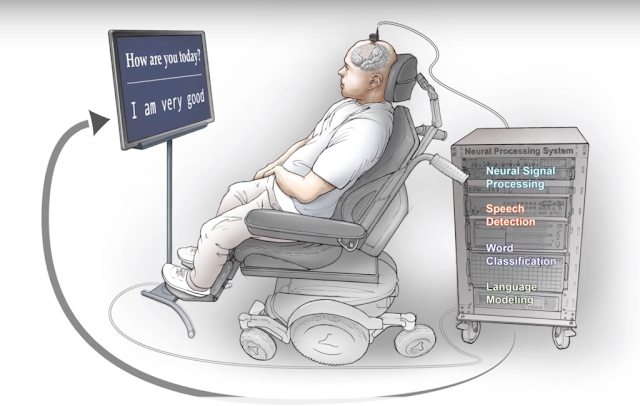A high-performance neuroprosthesis for speech decoding and avatar control is a groundbreaking technology that has the potential to revolutionize communication for individuals with speech impairments. This innovative device combines advanced neuroscience and artificial intelligence to decode the brain's neural signals and convert them into spoken words or commands for controlling an avatar.
Speech impairments can severely limit an individual's ability to communicate effectively, impacting their quality of life and social interactions. Traditional assistive technologies, such as text-to-speech devices or eye-tracking systems, have provided some solutions, but they often lack the naturalness and speed of real-time speech.
The neuroprosthesis developed for speech decoding and avatar control aims to bridge this gap by directly tapping into the brain's neural activity. It consists of implanted electrodes that are placed on the surface of the brain, specifically in areas responsible for speech production and motor control. These electrodes record the neural signals generated when a person thinks about speaking or moving.
These neural signals are then analyzed and decoded using sophisticated algorithms and machine learning techniques. The decoded signals are transformed into spoken words or commands, which can be transmitted to a speech synthesizer or an avatar for communication purposes. This allows individuals with speech impairments to express themselves in real-time, with greater accuracy and naturalness.
One of the key advantages of this neuroprosthesis is its high-performance capabilities. The device has been designed to achieve high accuracy and speed in decoding neural signals, enabling near-instantaneous speech production or avatar control. This means that individuals using this technology can have more fluid and spontaneous conversations, without the limitations of traditional assistive devices.
Moreover, the neuroprosthesis offers a personalized approach to speech decoding and avatar control. Each individual's brain activity is unique, and the device can adapt and learn from the specific neural patterns of the user. This personalized approach enhances the accuracy and efficiency of the system, making it more effective for long-term use.
The potential applications of this high-performance neuroprosthesis are vast. It can significantly improve the quality of life for individuals with speech impairments, enabling them to communicate more effectively and independently. It can also benefit individuals with conditions such as locked-in syndrome or amyotrophic lateral sclerosis (ALS), who may have limited or no motor control.
Additionally, the technology has the potential to be integrated into virtual reality or augmented reality platforms, allowing individuals to control avatars in virtual environments. This opens up new possibilities for social interactions, gaming, and even remote work or education.
While the high-performance neuroprosthesis for speech decoding and avatar control is still in the early stages of development, it holds great promise for the future. Continued research and advancements in neuroscience and artificial intelligence will likely lead to even more sophisticated and accessible devices, further enhancing the communication abilities of individuals with speech impairments.


Post a Comment
Full Name :
Adress:
Contact :
Comment: